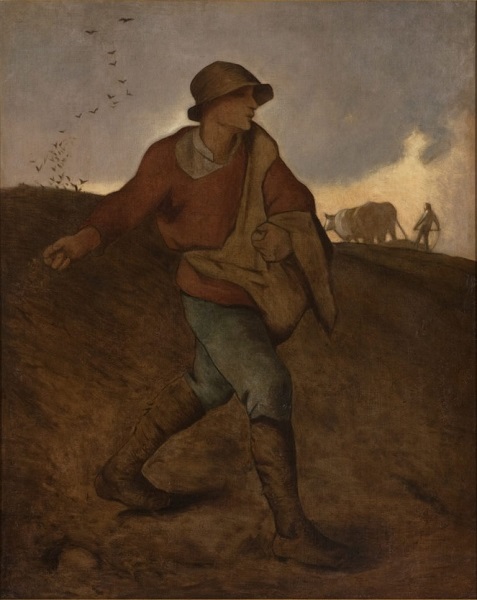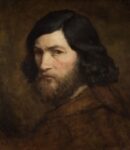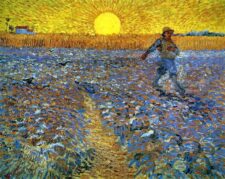
Jean François Millet
French, 1814-1875
The Sower, 1850, after
oil on canvas
41 1/2 x 33 3/4 in.
Carnegie Museum of Art, Pittsburgh, 19th Century or Earlier Painting Purchase Fund and with funds provided by Mr. and Mrs. Samuel B. Casey and Mr. and Mrs. George L. Craig, Jr.

Millet - Self-Portrait, c. 1850, Galerie Belvedere, Vienna
“How rightly it was said of Millet’s figures — his peasant seems to be painted with the soil he sows! How accurate and true that is. And how much it comes down to knowing how to make on the palette those colors that one cannot name and of which everything — fundamentally — actually consists.” - Letter to Theo, 21 May 1885

Van Gogh - The Sower, 1888, Rijksmuseum Kröller-Müller, Otterlo
COMMENTS
French artist Jean-François Millet (1814–1875) was a pioneer in developing innovative imagery of rural peasant life, landscapes, and nudes… In his lifetime, Millet’s ennobling treatment of working-class peasant life, considered inappropriate by the established French Academy of Fine Arts, was controversial. So too was his painting technique, which involved the use of rough brushstrokes and flattened, semiabstract forms. Soon after his death, the French state embraced Millet as a national hero who had captured the nation’s countryside in all its glory…
In mid-19th-century France 75 percent of the population worked in rural agriculture. Jean-François Millet prided himself on his knowledge of various aspects of farming. He was fascinated by the cycle of the seasons and worked on the land as a young man. Millet’s art represents age-old patterns of life in the fields in the years before large-scale mechanization transformed the existence of the agricultural worker.
Millet’s imagery focuses on themes of sowing seed, reaping wheat, and gleaning, the activity of collecting grains of wheat left after the harvest. He represented his rural figures with a sense of heroism and dignity, often depicting them from innovative viewpoints from behind or below. His support and respect for the peasants carried political weight when male agricultural workers had recently gained the right to vote following the French Revolution of 1848. Millet was also deeply sympathetic to difficult conditions for working women, who earned about half as much as men did. For example, in Summer, the Gleaners, Millet represented women in the act of gleaning.
Millet was exceptional in his lifetime for frank depictions of the harsh realities of rural life. His approach stands in contrast to the idealized treatment of such subjects portrayed with photographic clarity of his fellow peasant painter Jules Breton…
Of all the artists in this exhibition, it is Vincent van Gogh who was most intensely devoted to the work of Millet. He saw Millet as a mentor and guide, describing him as “Father Millet,” and he considered that Millet had originated a tradition of modern art that focused on the importance of rural life, as opposed to the painting of cities. One of Van Gogh’s favorite themes in Millet’s work was the sower. Van Gogh represented this subject in more than 30 paintings and drawings.
https://www.slam.org/explore-the-collection/millet-and-modern-art/
SBMA CURATORIAL LABELS
This powerful striding figure of a peasant, flinging seed over freshly tilled soil, would haunt Van Gogh throughout his adult life. He returned to it repeatedly, making some thirty drawn and painted copies, inspired by the reproductive print he owned of the painting by his first artist-hero, Millet. The controlled and repetitive movements of the sower trigger an older sensation of time experienced at a slower pace, as defined by the prolonged duration of traditional forms of labor and the shifting arc of the sun throughout the course of the day. As the critic Théophile Gautier put it in his review: “life spreads out from his large hand, and, with a superb gesture, he, who has nothing, leaves behind the bread of the future upon the ground … There is something magnificent and stylish in this figure, with its violent gesture, its dilapidated demeanor, which seems to be painted with the earth he sows.” Certainly, Van Gogh would have heartily agreed with this assessment and, especially, the equivalence made between the substance of painting and the soil it could embody.
- Through Vincent's Eyes, 2022
